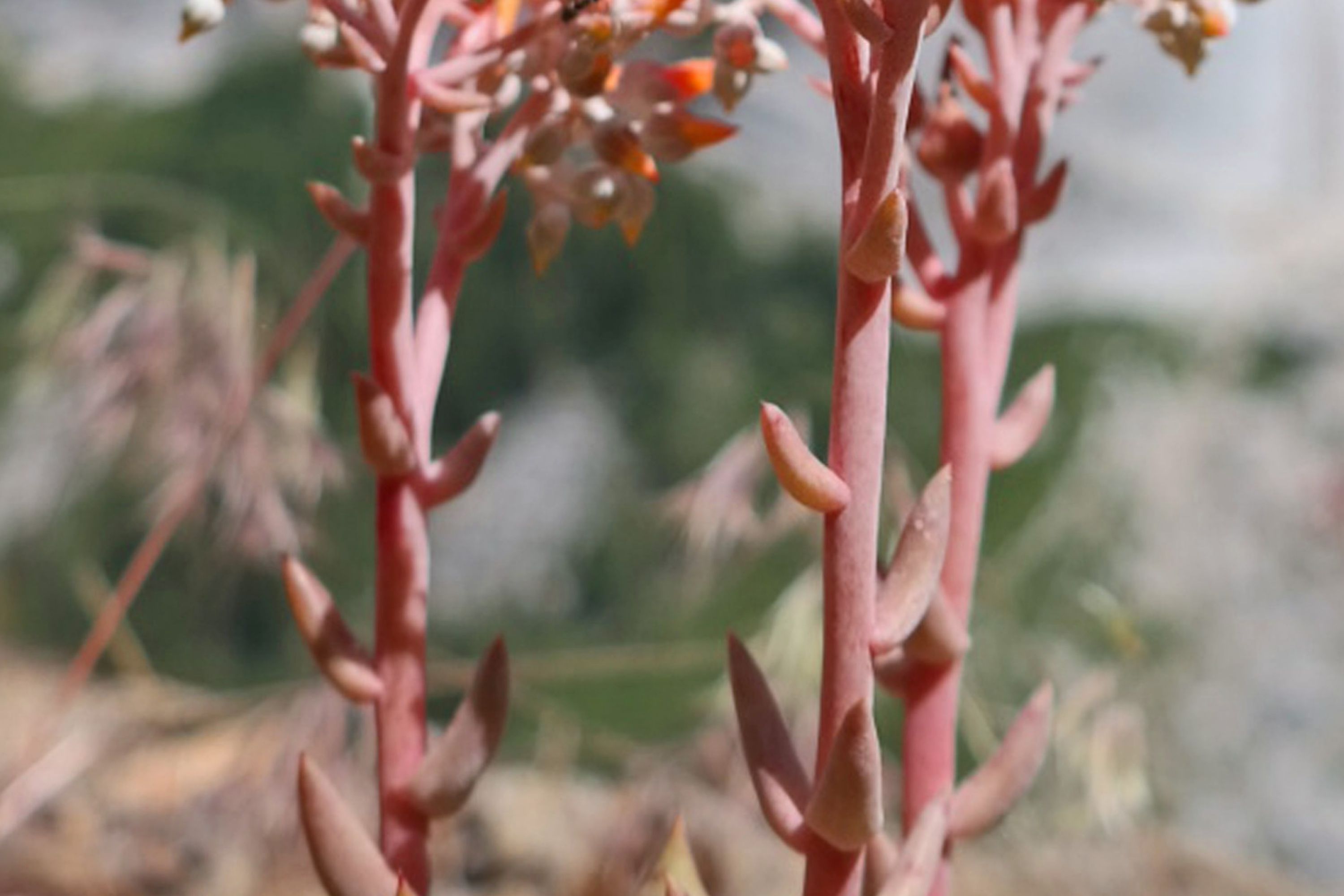Liveforevers
(Dudleya albiflora)

Description
Dudleya, commonly known as liveforevers (Spanish: siempreviva) is a genus of succulent plants in the stonecrop family, Crassulaceae, consisting of about 68 taxa in southwestern North America and Guadalupe Island. The species come in multiple forms, some large and evergreen, others cryptic and deciduous. The flowers of Dudleya have parts numbered in 5, and when fruiting are filled with tiny, ovoid or crescent-shaped seeds. The genus evolved as neoendemics, from ancestors in the stonecrop genus, Sedum. The ancestors radiated southward from Sedum during the creation of the dry summer climate in the California region 5 million years ago. Many were once classified as Echeveria, a morphologically similar genus. Taxonomic research is still at an early stage in the genus, and is complicated by the fact that many species are becoming endangered. Although Dudleya is a relatively obscure genus in comparison to other succulents, converging interests by succulent collectors, native plant enthusiasts and gardeners have led to cultivation of many species as ornamental plants. In the wild, many species of Dudleya are vulnerable, as land development and poachers threaten often niche populations of plants. Poached plants are often shipped to East Asia, especially South Korea. Conservationists, nurseries and governments are retaliating through propagation programs and protection laws. This genus is the only taxon of the Sedeae tribe to have evolved sympodial branching. Before the advent of modern phylogenetics, the genus was divided into three subgenera, two of which were formerly their own genera. The subgenera consisted of Dudleya, Stylophyllum, and Hasseanthus. Recent research has shown that these groups are polyphyletic, and henceforth, somewhat unacceptable as taxonomic groups. ne of the most famous features of some Dudleya are their waxy coating. Numerous species have their foliage covered in an epicuticular wax, or farina. This waxy coating is usually white, chalky, and mealy, and is the namesake in many epithets, like chalk dudleya, powdery liveforever, and giant chalk dudleya. The wax on the giant chalk dudleya is a surface with some of the highest ultraviolet reflectivity ever discovered in plants. When exposed to water, the wax may coat drops on leaves, preventing their evaporation. The farina is mostly composed of pentacyclic triterpenoids.
Taxonomic tree:







